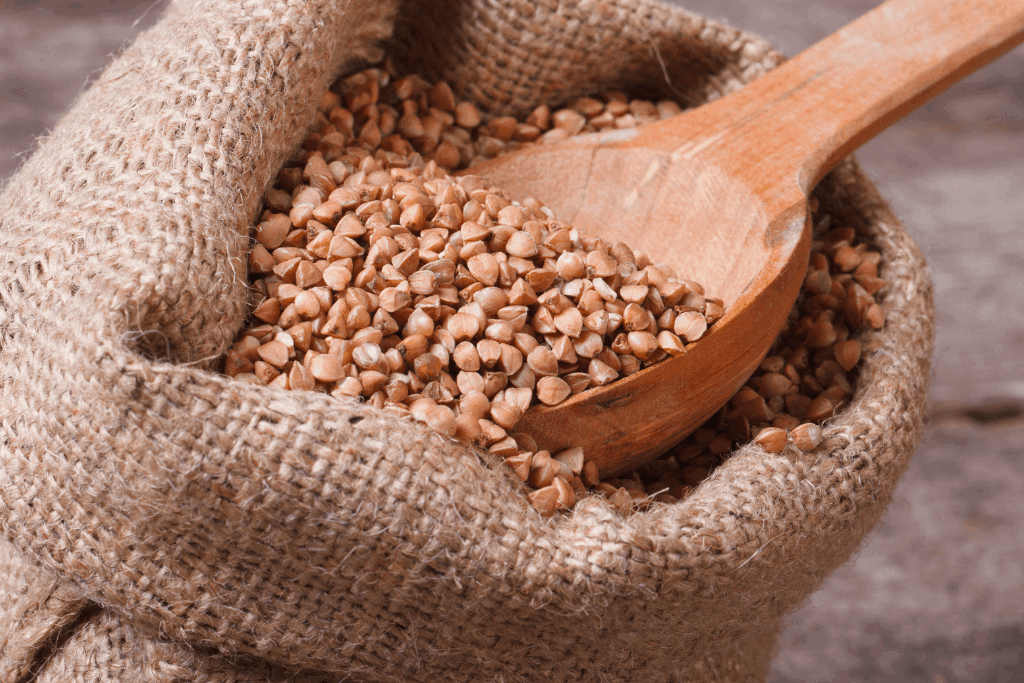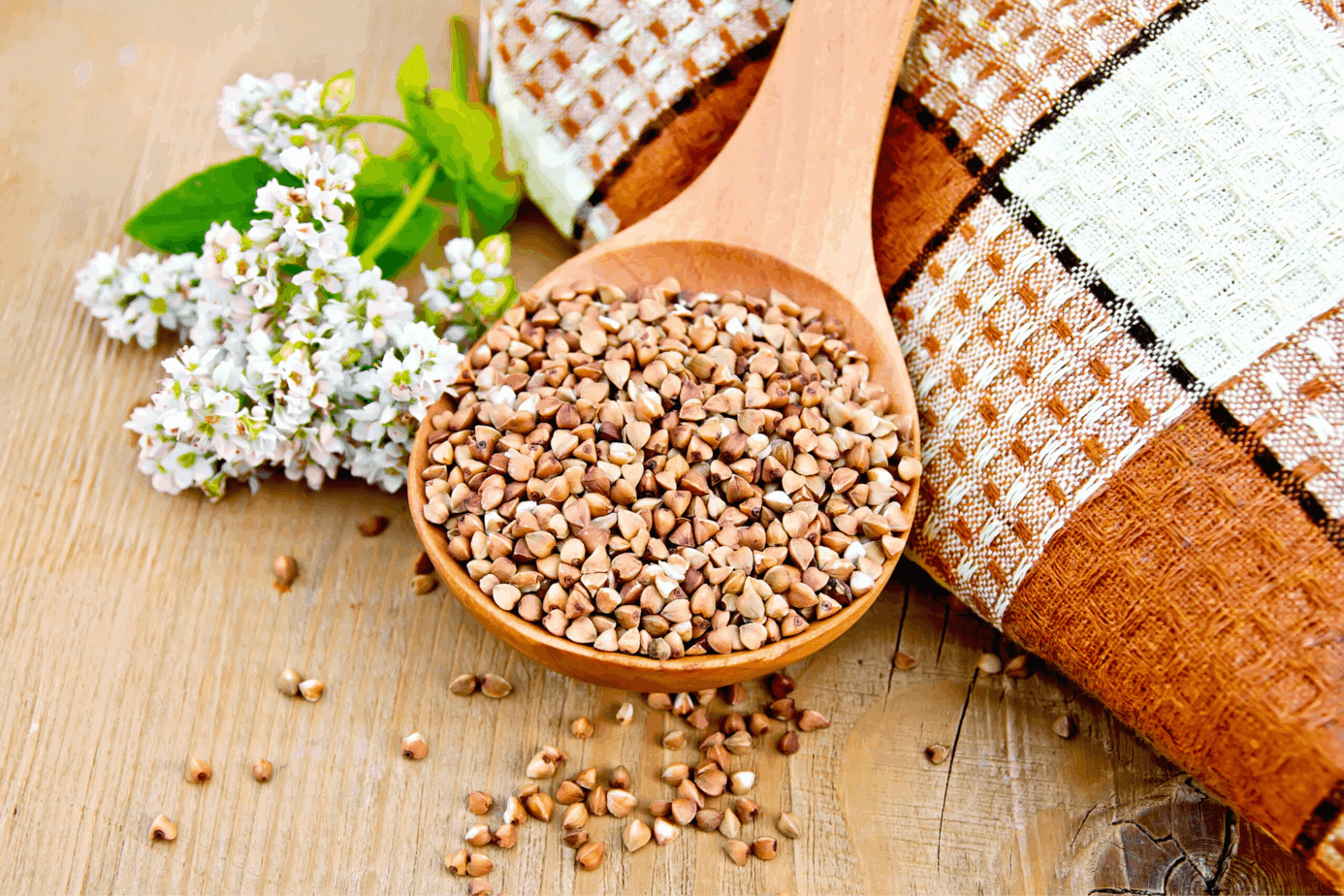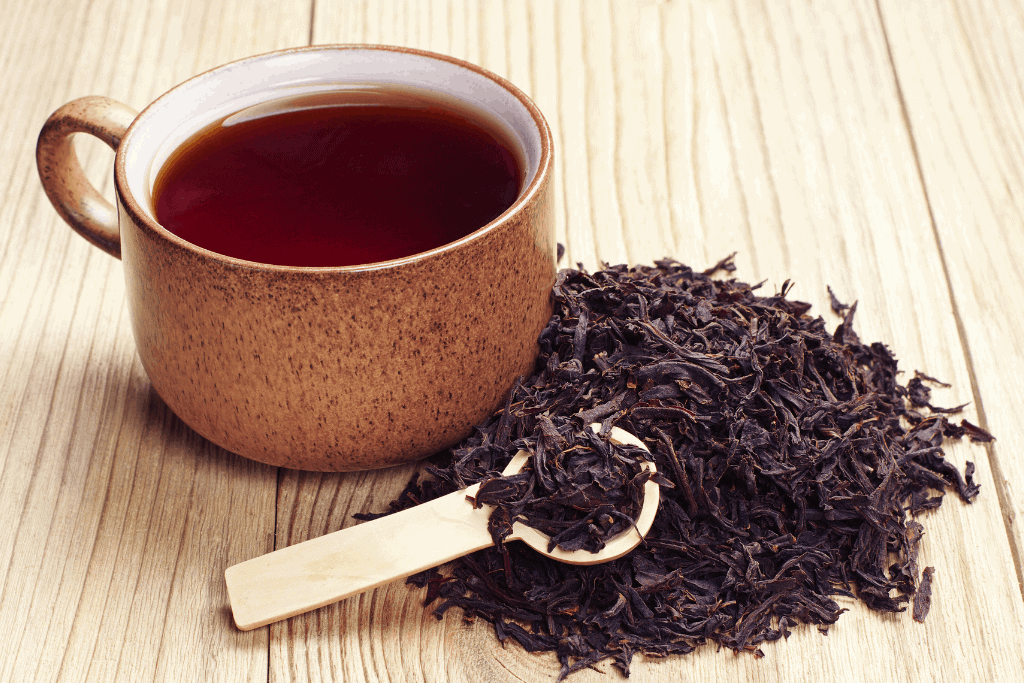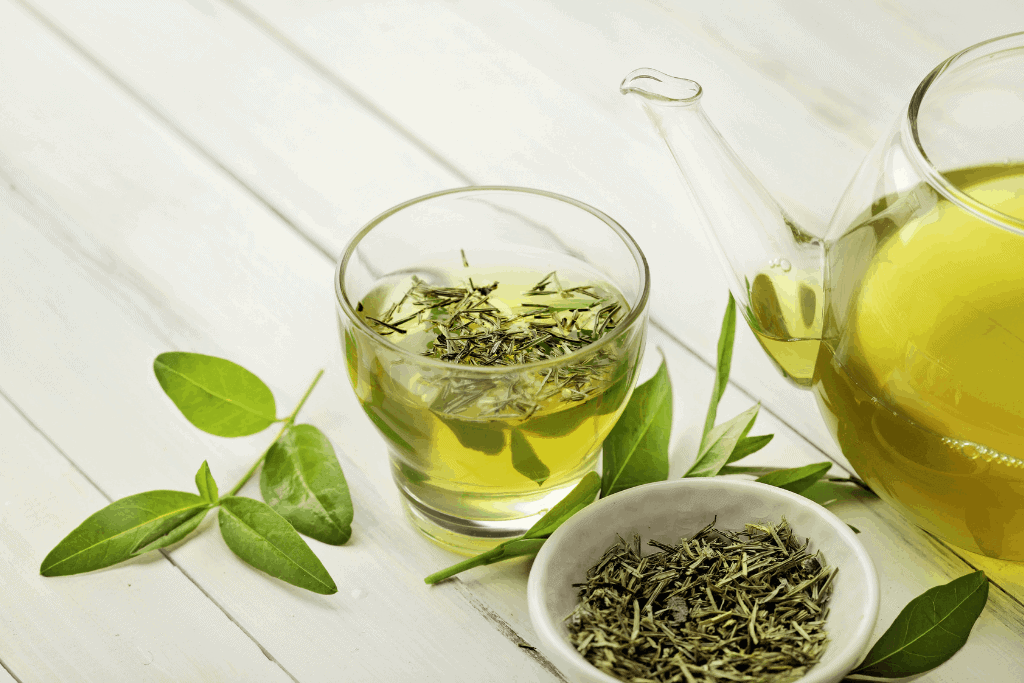Buckwheat tea is a well-known beverage in Asia, in Japan, they call it soba-cha in Korea memil-cha (메밀차) and in China kuqiao-cha. This tea comes with some immense health benefits and can help reduce high cholesterol and improve the blood vessels in the body.
Making buckwheat tea is not that hard and doesn’t require any special skills. You can make it just like you would any other tea at home. This tea can also be served hot or cold and if you’re looking for a new healthier tea to add to your diet then this is the one for you.
What Is Buckwheat Tea?
So what is buckwheat tea? Well, the ingredient Buckwheat is from a unique group of plants that belong to the class pseudocereals. These cereals are seeds that do not grow on grasses and they can be consumed as grains.
Buckwheat is not the only member of the class, pseudocereals. Other members of pseudocereals include quinoa and amaranth.
This pseudocereal has practically nothing to do with wheat as most people might think because of its name, and it is almost gluten-free.
This seedy plant has been known for its numerous health benefits primarily because of Its high mineral content and antioxidant activity.
It also has the potential to regulate blood sugar levels. There are basically two groups of buckwheat; they are the Fagopyrum esculentum (also known as common buckwheat) and Fagopyrum tartaricum (also known as Tartary buckwheat).
Both groups of buckwheat are usually grown for food and they are widely seen in Russia, Kazakhstan, China, Central, and Eastern Europe.
As the name implies, buckwheat tea otherwise called (sobacha) is brewed from the grains of buckwheat. The tea is a major tea in Japan, known for its sweetness and health benefits.
It is the best kind of tea you can take just before you go to bed to give you that good night’s rest you so desperately need.
For people who are willing to add beverages to their diet, especially tea, then the buckwheat should be on your list.
It is both refreshing and soothing and has been known to boost the immune system and maintain blood sugar.
Which is also known as Sobacha in Japan and other parts of the world, is a tea made from the grains, leaves, or flowers of buckwheat.
The leaves and other parts of the plant are usually dried and roasted and the tea is mainly drunk for enjoyment and other health purposes.
Memil-cha as it is known in Korea, and Keqiao-cha as it is known in China, this tea has surely made its mark in the lives of tea lovers.
Memil-cha in Korea is made from Tatary buckwheat as it is extremely nutty and contains a lot of rutin (a plant component that has very strong antioxidant effects in the body and is mostly seen in certain fruits).
There are various brands of Sobacha tea in the market today, and each of these brands has its own unique color and flavor when they are brewed, served, and drank.
How Does It Taste?
Buckwheat has a unique taste. Although there are a lot of brands of this tea out there, there are still those little discrepancies that separate one from the other. But in general, the tea is characterized by a dry, nutty, earthy taste and a light scent.
How to Serve The Tea?
You can prepare this tea by brewing it the same way you would do any other tea and it is best enjoyed without adding any sweetener or milk. You can also serve the tea either hot or cold.
You can buy these teas online via Amazon but, you won’t get access to all the brands of this tea, only a few. You can also find them in any Asian markets or health food shops.
What Are The Benefits Of Buckwheat Tea?
1. Prevents Edema
The edema generated as a result of chronic venous insufficiency can be controlled using buckwheat. This hypothesis has been illustrated in research carried out by a group of European scientists and has been published in the European Journal of Pharmacology.
A selected group of human patients was used for this study. One group received the placebo tea and the other received buckwheat tea.
It was then observed that patients who were administered the buckwheat tea showed great improvement that those in the placebo group.
The researchers, therefore, concluded that edema patients with CVI problems can ameliorate their conditions using this tea.
2. Cardiovascular Benefits
Another study which was carried out by some researchers on a group of about 220 postmenopausal women who had cardiovascular disorder (CVD), claimed that CVD can be managed by consuming buckwheat (grains) at least 5 to 6 times a week.
The results of this research were then published in the American heart journal. Aside from CVD, Sobacha tea can also help to manage high blood pressure and high cholesterol in postmenopausal women.
3. Lowers Blood Glucose Levels
This hypothesis was tested on diabetic rats. The concentrate of this tea was administered to diabetic rats and it was discovered that these diabetic rats showed great improvement towards the disease.
The results of this research were shared in The Journal of Agricultural and Food chemistry. However, methods used for preparing the tea is a little bit different from the normal one.
4. Promotes Renal Function
Rats that were induced with kidney damage showed a great improvement and response to treatment when buckwheat was administered. The concentrate of this high-density tea was used for the study.
The tea greatly delayed the progression of induced kidney damage. Although this has not been tested in humans yet, it is believed that the same results will be encountered.
5. Can Be Used To Manage Diabetes
The components of Sobacha tea can be very effective when used to manage blood glucose levels. Tartary buckwheat that is very rich in rutin can be used to prevent type 2 diabetes when it is combined with other novel strategies.
Another study that involved a placebo group confirmed that this tea is able to lower blood glucose levels by at least 19%, 90 to 120 minutes after it was administered to laboratory animals that were induced with diabetes.
In addition, the placebo group did not show much improvement as the other group that was given buckwheat tea.
This ability of this tea to lower blood glucose levels is due to the effect of the chiro-inositol compound. Scientists believe that this compound seems to play a primary role in glucose metabolic pathways and cell to cell signaling pathways in both animals and man.

How To Make Buckwheat Tea?
There is a lot of things about tea that most people don’t know. This is because this unique beverage is not fancied by a lot of people.
Only a select few know how beneficial drinking tea can be and how thrilling drinking tea is. With that said, there is still the matter of knowing how to prepare tea, especially one as delicate as buckwheat tea.
Things like steeping time, steeping duration, and the amount of Sobacha you will need for your tea are to be considered.
There are a lot of factors that can ruin your tea when you make them, so it is best that you try not to make mistakes during the brewing process as it could ruin the whole experience and taste of the tea.
However, the process of making tea is not really that complicated, so don’t be too scared about it. To help you with this below is a step-by-step guide on how you can make buckwheat tea.
Be sure to read carefully if it’s your first time.
Step 1: Ingredients You Need
Here’s what you’ll need:
- 10 grams of buckwheat
- A glass teapot that can fit 500 ml of hot water
- Hot water at 100 degrees Celsius (212 F)
Step 2: Add Buckwheat To The Teapot
Once you have obtained your buckwheat, add it into an empty and clean glass teapot. 10 grams of buckwheat should be equivalent to 1 tablespoon of buckwheat.
Also, try to remember that this is not fixed. The amount of buckwheat you want to use can depend on the size of your teapot, especially if it is bigger than 500ml or smaller than 500ml.
You can choose to adjust the quantity of the buckwheat appropriately to match the size of the teapot you want to use. In addition, the amount of buckwheat you use for the brewing process can also depend on the number of people you are making the tea for. So, your judgment really plays a major role in these kinds of situations.
Step 3: Add Hot Water To Steep Buckwheat Tea
The next step is to add hot water to the teapot and cover the teapot with its lid. 500ml of water is enough for a teaspoon of buckwheat. A teapot with an infuser will make it easy for you to remove your buckwheat.
Step 4: Allow The Steeping Time To Pass
Allow the buckwheat to steep inside the teapot for about 3 minutes so as to get a better infusion. You can also choose to extend or delay the infusion based on your own preferences.
However, 3 minutes is the best time there is but, if you decide to lower the steeping time, you should brace yourself for two or three more brews.
On the other hand, if you increase the steeping time and concurrently the intensity of the flavor, you might want to reduce the number of brews.
Step 5: Serve & Steep Again
The next step is to serve and enjoy the tea. You can do this once you have finished steeping. After serving, you can also decide to steep the tea for two more sessions.
Use the steeping session below to maintain the water temperature;
2nd brew: 5 minutes
3rd brew: 8 minutes
If you are worried about your weight, you don’t have to. This will allow you to drink as much soba tea as you want. Also, to are a lot of calories embedded in buckwheat itself, which is a good thing.
But, once you decide to use the buckwheat for tea, the number of calories is reduced. Drinking this tea has a lot of health benefits including maintaining a healthy state of blood glucose levels.
Drinking Buckwheat Tea
After a hard Day’s work, or a busy day at the office, we sometimes tend to work at nights after our kids have been put to bed. If you are one such parent, I imagine that you might find it very difficult to relax and concentrate.
I mean let’s face it, maintaining your job and running a family is not easy, especially if you have kids that are very demanding. Sometimes you just feel the need to relax and let go.
This is were you need buckwheat tea. Even if there has been no record of this tea aiding in weight loss, it can still help you relax and concentrate better.
It also provides you with a bit of energy too. The tea is not caffeinated, so it is perfect for an evening beverage. I sincerely hope that drinking this tea (sobacha) has helped you the way it has helped a lot of people out there.
Side Effects
Actually, this tea has not been shown to induce any adverse effects so far, when it is consumed with a sense of proportion and moderation.
In fact, aside from the benefits of this tea listed in this article, there are still a lot of ways it can be beneficial to humanity.
The only problem most people might encounter when drinking Sobacha tea is that they might be allergic to buckwheat itself.
Conclusion
Buckwheat is not only unique in taste and flavor, but it also provides a lot of health benefits. As a side note, I suggest you do a little bit of research to know more about the health benefits of Sobacha tea.
The various brands of this tea are available in most Japanese shops and even on Amazon. So, what are you waiting for? Why not get a taste of this tea now? Who knows, it might just be worth it.






